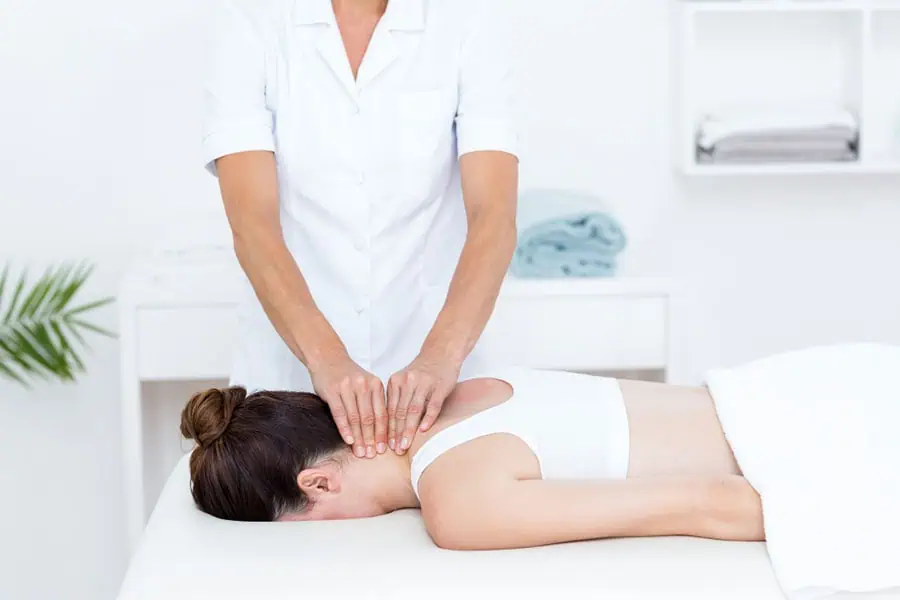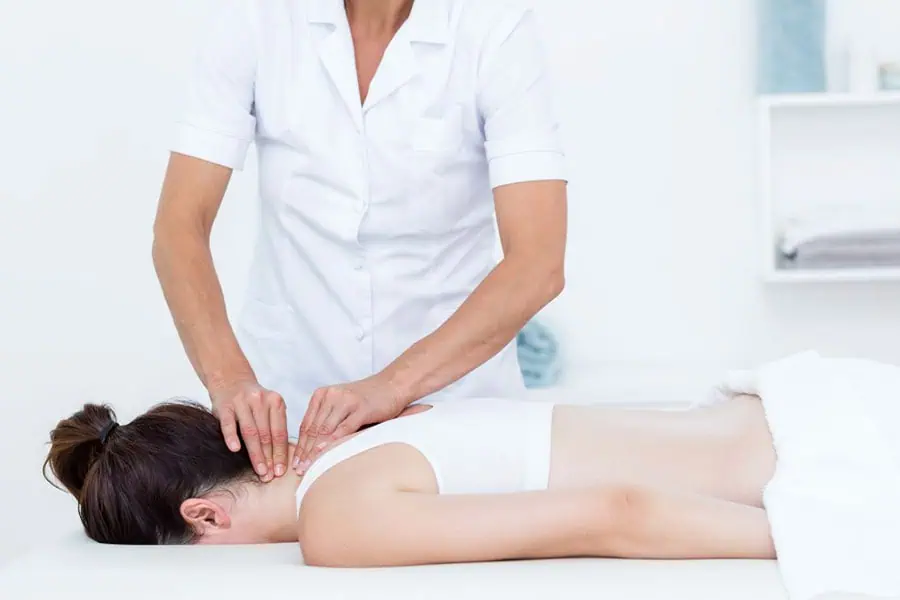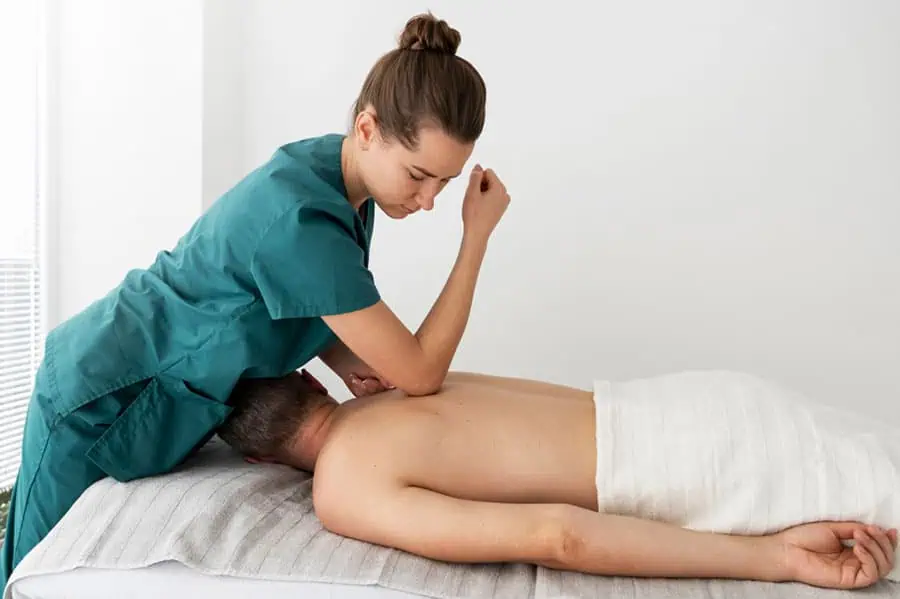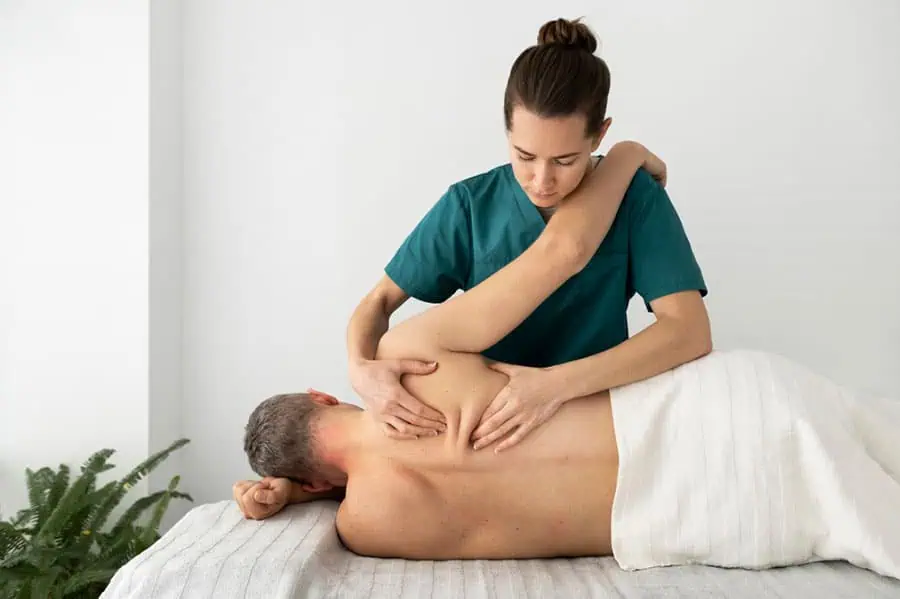Medical Massage for Rehabilitation: How It Supports Healing & Recovery
Medical massage is a focused therapy that helps people recover from injuries, surgeries, or chronic pain. Unlike relaxation massages in spas, it uses clinical techniques to promote healing and restore function.
As part of a comprehensive rehabilitation plan, medical massage can stand alone or be combined with other forms of alternative medicine such as acupuncture, cupping therapy, or aromatherapy. These approaches are often used together to enhance the body’s natural ability to recover and reduce reliance on medication or more invasive procedures
What Is Medical Massage?
Medical massage involves targeted therapeutic techniques designed to address particular health concerns, especially those related to muscles and joints. It's commonly utilized to alleviate pain, aid in injury recovery, and enhance range of motion. This approach differs from general relaxation massages by concentrating on areas that require specific attention for healing.
Often integrated into a broader rehabilitation program, medical massage is guided by a physician's recommendations and may be combined with physical therapy or other therapies like cupping therapy, stretching, or acupuncture. By working on soft tissue, medical massage can improve muscle tone, reduce inflammation, and break down scar tissue. It also helps increase blood flow and supports the immune system, making it a valuable tool for long-term pain management and overall health care.
How Does Medical Massage Work?
Medical massage uses a variety of manual therapy techniques designed to help the body heal from injuries, reduce pain, and improve mobility. These techniques are often personalized based on the patient's condition, medical history, and treatment goals.
Trigger Point Therapy
This method targets trigger points—tight, painful spots in muscles that can refer pain to other areas of the body. Applying pressure to these points helps release knots, improve muscle tone, and reduce tension-related headaches or shoulder pain.
Deep Tissue Massage
Deep Tissue Massage involves applying strong, focused pressure to reach deep layers of muscle and connective tissue. It's effective for chronic pain, back pain, and tension caused by injuries, strain, or poor posture. It also improves blood flow and breaks down adhesions.
Myofascial Release
The myofascial release technique targets the fascia—a thin layer of connective tissue surrounding your muscles and joints. Releasing restrictions in the fascia improves range of motion, reduces pain, and supports healing by decreasing inflammation.
Manual Lymphatic Drainage
A gentle method that stimulates the lymphatic system to move fluid and reduce edema (swelling). This technique is especially helpful after surgery or an accident, and supports the immune system by helping the body clear waste more efficiently.
These therapies are often combined as part of a comprehensive rehabilitation or physical therapy program. When integrated with therapeutic exercise, stretching, or other therapies like cupping therapy or acupuncture, medical massage can greatly enhance healing and improve comfort and mobility.

Benefits of Medical Massage for Rehabilitation
Medical massage offers multiple benefits for people recovering from an injury, surgery, or chronic muscle and joint pain. These techniques not only help reduce discomfort but also support the body’s natural healing systems, like the immune system, lymphatic system, and nervous system. It’s especially useful in rehabilitation settings where managing pain, improving movement, and supporting tissue recovery are key goals.
| Benefit | How It Helps |
| Pain Relief | Reduces muscle tension and supports natural pain management by calming the nervous system and improving blood circulation. |
| Improved Mobility | Helps release tight fascia and connective tissue, improving range of motion and flexibility in stiff joints and muscles. |
| Faster Injury Recovery | Increases blood flow, reduces edema (swelling), and supports healing by bringing nutrients and oxygen to damaged soft tissue and muscles. |
| Stress Reduction | Calms the body’s nervous system, helping to lower stress, reduce fatigue, and improve breathing and heart rate for whole-body wellness. |
| Scar Tissue Management | Breaks down adhesions and thickened scar tissue that can limit movement or cause discomfort after surgery or an accident. |
Conditions That Benefit from Medical Massage
Medical massage is an effective therapy for a wide range of physical conditions. It helps treat both short-term injuries and long-term health concerns by improving circulation, reducing pain, and supporting the body's natural healing systems.
| Condition Type | Examples | How Medical Massage Helps |
| Musculoskeletal Injuries | Strains, sprains, overuse injuries, soft tissue trauma | Reduces inflammation, increases blood flow, and improves flexibility. Helps break down adhesions and scar tissue, relieving tension in connective tissue. |
| Post-Surgical Rehab | Joint replacements, spinal surgeries, orthopedic surgery | Supports healing by increasing circulation, reducing edema (swelling), and minimizing scar formation. Helps restore range of motion and tissue strength. |
| Chronic Pain Conditions | Fibromyalgia, arthritis, sciatica | Alleviates chronic pain, relieves nerve pressure, improves muscle tone, and helps regulate the nervous system. Promotes natural pain management. |
| Sports Injuries | Rotator cuff issues, tendonitis, muscle spasms, strains | Enhances recovery from sports-related injuries. Reduces muscle tightness, helps restore motion, and supports reinjury prevention through physical fitness. |

Who Should Not Receive Medical Massage?
While medical massage is safe and helpful for many people, there are some situations where it may not be recommended. If you have any of the conditions below, always talk to your physician or health care provider before starting massage therapy:
| Condition | Why Massage Might Not Be Safe |
| Fever or Infection | Massage can spread infection through the blood and make you feel worse. |
| Open Wounds or Skin Conditions | Massage over damaged skin or a healing wound can cause pain or slow the healing process. |
| Recent Surgery | After orthopedic surgery or another operation, your physician may want you to wait before getting a massage on that area. |
| Severe Osteoporosis | Fragile bones can be at risk of fracture under pressure during massage. |
| Blood Clots or Deep Vein Thrombosis (DVT) | Massage may dislodge a clot and cause serious problems. |
| Certain Heart Conditions | If you have heart disease or high blood pressure, always consult your doctor first. |
| Pregnancy (certain stages) | Some types of massage are not safe during early or high-risk pregnancy. Be sure to see a therapist trained in prenatal therapies. |
How The Right Spinal Clinic in Tampa, FL, Helps
At The Right Spinal Clinic, we offer specialized rehabilitation programs that integrate medical massage to facilitate optimal recovery. Our team collaborates with physical therapists and chiropractors to provide holistic care, ensuring personalized treatment plans that focus on pain relief and mobility improvement. We tailor every medical massage session to meet your specific rehabilitation needs, helping you recover faster and feel better.
Achieve Faster Recovery with Medical Massage
Medical massage plays a crucial role in rehabilitation by addressing pain, enhancing mobility, and promoting overall health. If you're recovering from an injury, surgery, or managing chronic pain, The Right Spinal Clinic in Tampa, FL, is here to assist with expert medical massage therapy.
Schedule an appointment today by calling (813) 392-2164 or visit us at 4019 W Waters Ave Ste E, Tampa, FL 33614.


